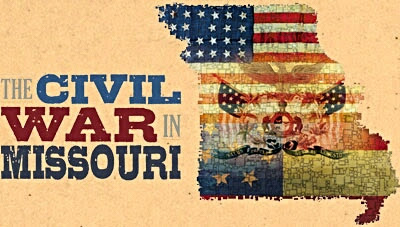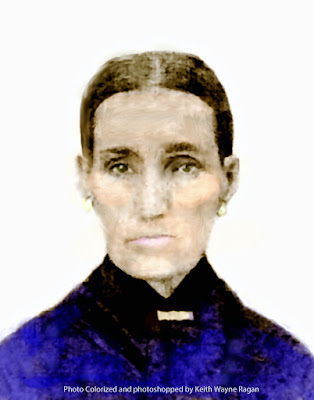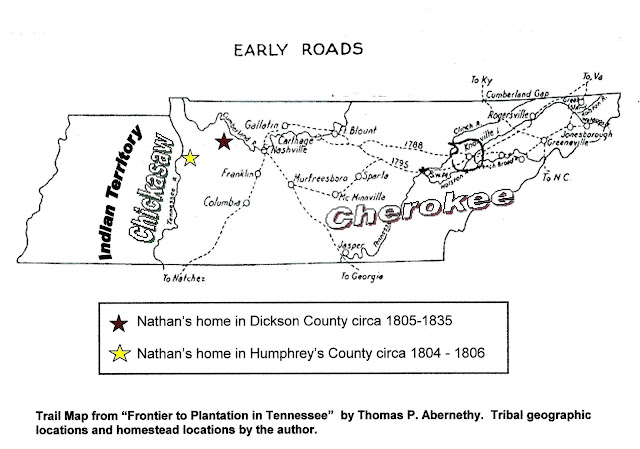The Battle of Old Greenville and Civil War Service for Madison Wilson of Wayne County, Missouri (1834 – 1894)
For all of your Grandsons and Granddaughters,
Now and for Generations to Come
Now and for Generations to Come
Nowhere was guerrilla warfare more fierce and widespread than
in southeastern Missouri, and Wayne County in particular. The Cavalry Militias in Wayne County for
both Union and Confederate forces were commonly engaged in this form of
warfare, hunting each other in the bottoms of the St Francis River and the
mires of Mingo Swamp. Their engagements were bloody, often, and feudal in
nature. The families on opposing sides knew each other and most lived close to
each other at the war’s outset. The
hostilities and feuds would continue on for many years after the Civil War
ended in Wayne County.
The prominent Union Militia was the 12th Regiment
Cavalry Southeast Missouri Volunteers, which morphed into the 3rd
Regiment Cavalry Southeast Missouri Volunteers. Madison Wilson was enlisted as a Private in 1862 and served in
both Regiments. Madison Wilson was my Great Grandfather, the grandfather of my mother, Iva Delores (Dee) Wilson Ragan.
January 10th, 1862: Matison (Madison) Wilson
enlisted in Wayne County, Missouri as a Blacksmith (Private) under Captain
William Leeper, 12th Regiment Cavalry, State Militia Volunteers,
Company B. He was mustered in at Middlebrook, in the vicinity of Pilot Knob.
Reference Film Number M390; roll 53 of Detailed Soldiers Record, on January 23,
1862 although he was not actually present, and the records indicate he was
already assigned detached duties. He
was 36 years old per the record, 29 in actuality.
I cannot help but reflect on what being a blacksmith meant
to a Cavalry unit during this time.
Every horseshoe lost on every “scout” would need to be replaced by
Madison. Every 15-minute break, after
hours of riding would provide a respite for everyone but him. There would always be tack, equipment,
weapons and horses needing attention.
To be sure, he would be every horse soldier in Company B’s best friend
Madison’s records often spell his name as Matison and
brother Josiah C. often is listed as Joseph C.
“Big brother” Madison and “little brother” Josiah were always close, and
they rode together from near Bethel on that late Winter day in January 1862 when they enlisted in the Union Cavalry . Josiah was 28 at the time of his enlistment.
The men were expected to report with their own horses and
gear, in effect signing them up for battle, too! Several records verify this.
The Company Muster Roll of Captain Leeper’s 11th Battalion, 12th
S. M. Cavalry on the 30th of April 1862 show Madison present with
“private horse”. The May and June
Muster Roll of 1862 show Madison present in Company B, 12th S.M.
Cavalry with the remark “Owns horse and equipment.” The July and August Muster Roll again reinforce his occupation as
a blacksmith in Company B, 12th S.M. Cavalry and notes repayment to
him for horse and equipment lost in battle and he is owed $100 for horse and
$29.34 for equipment. There will be
more on this particular engagement in the narrative to follow.
August 31st, 1862: Madison Wilson transferred to 3rd
Regiment Cavalry, State Militia Volunteers, Company L, as a Private for Captain
Smith.
December 9th, 1862: Madison Wilson was
discharged.
April 13th, 1863: Granted Civil War Permanent
Disability Discharge “due to weak and diseased lungs caused by measles while in
service.”
The following are campaigns in which he was in active
service and almost certainly was present and engaged:
February 23rd-25th, 1862: 12th Regiment, Company
B, expedition (scout) from Greenville to St. Francisville.
February 24th, 1862: 12th regiment,
Company B, Mingo Creek engagement near St. Francisville.
July 1st, 1862: 12th Regiment, Cherry
Grove engagement.
July 20th, 1862: 12th Regiment
Company, Companies B and G, Battle of (Old) Greenville.
July 26th, 1862: 12th Regiment, Greenville.
July 26th-29th, 1862: 12th
Regiment, (detachment) Scout in Southeastern Missouri.
July 28th, 1862: 12th Regiment,
(detachment) Bollinger’s Mills engagement.
August 24th, 1862: 12th regiment
(entire 1st Battalion) Crooked Creek engagement near Dallas (Marble
Hill).
In addition to these records of service, I have email correspondence with Cletis Ellinghouse, author of several important books on
the history on Wayne County, these notes:
“Two of Josiah Wilson’s sons, Josiah C. (apparently known
as J.C.) and Madison Wilson, served in the Union’s Company B, 12th
Cavalry, Missouri State Militia, and were targets of the rebels in the terrible
“surprise” along the St. Francis River near Old Greenville. J.C. Wilson suffered severe wounds in that
fight and was hobbled for the rest of his life.”
The battle in Greenville in which the Wilson brothers were
targeted was the July 20th 1862 engagement previously notated,
proved by the author from muster records indicating they were heavily engaged
in this conflict, Josiah wounded and Madison “having lost his horse and
equipage in battle”. Either the horse
was shot from underneath him or lost when the surprise attack began and the
Union men sought cover.
From the memoirs of H.C. Wilkinson, a soldier in Company K
of the 68th Enrolled Missouri Militia, and later a Wayne County
preacher helps us to understand a little more of what that day was like as they
were all trying to find some way to get out of harm’s way and return fire. He has in his memoirs the story told by
Henry Y. Mabrey, orderly Sergeant for Captain Leeper that fateful day. These are his words:
”Of course, it was a surprise to us. They were within about 100 yards of us
when I discovered them and I called ‘Company B! Fall in!’ Our camp guard fired one
shot and we that could, ran for life. Some of the boys were not up yet. Two of them,
Dick Faggerty and Tho. Armstrong, were killed outright in their tents. Joseph M.
Stephenson and Jas. A. Proffit were badly wounded and afterwards died of their wounds. Josiah
C. Wilson was shot through the leg below the knee, rendering him a cripple for
life. Samuel R. Kelley (afterwards a 1st Lieutenant, got a shot in the shoulder, taking the
lead with him to his grave.
There was a general ‘skedaddle’ of both of our
companies, but Lieut. Purcell was shot through the toe and captured. Hamlet Clark slipped and fell as
he started to run, just at that juncture about a dozen shots were fired at
him, - none of them touched him, but in his wisdom he lay still and they came and took off his
belt, arms, etc., boasting what a fine Yankee they had slain. Old Hamlet lay still, until 17 of
us, including Capt. Leeper and Lieut. Francis got together and putting on a bold front, we
raised the “rebel yell”, dashing back toward them, firing as we went. That gave old Hamlet
an opportunity to rise and get away.
Capt. Leeper being in command, of course we crossed the
St. Francois River at ‘Leeper’s Ford’, which extended all the way from where
the Wilson barn now stands down to the Greenville cemetery, (about a quarter of
a mile H.C.W.) The St. Francois River was navigable for boots that morning. How
many of them were hurt, I never knew definitely.
One man by the name of Collins, of the enemy, was shot though the breast, too
badly hurt
for them to take him away. He soon died. The citizens of Greenville told me of
as many
as half a dozen that were wounded, -some pretty badly, but all able to ride
away on
horseback. Madison Wilson slipped and fell as he went down to the ford
and ruptured
himself.
The enemy got all of our horses, but five that broke loose and two or three
that
were killed during the fight. They got about 40 guns (Enfield rifles with sabre
bayonets)
and some ammunition They also got our good clothing, -not sparing my best
shoes, my
best time piece and even took my brace of holster pistols!”
This conjures images to me of Madison Wilson, my great grandfather, deprived of horse and gear, somehow securing his weapon and racing with the cluster of courageous men headlong down the banks of the St. Francis River, dodging volleys of lead in an attempt to save a fallen comrade. Then during that daring descent falling into the shrunken river, severely injuring himself. The river, according to the eye-witness accounts, at wading levels at the ford crossing, would have offered little place for refuge during the hailstorm launched by the Southern guerrillas.
His survival was fortuitous, if not miraculous.
In the book "Guerrilla Hunters of Civil War Missouri" by James W. Erwin, the battle location is placed as one-half mile north of Old Greenville in an orchard on top of a bluff east of the St. Francis River. The book states that the battle occurred "after a night of torrential downpour and thunderstorms" which could not have been accurate based on the first hand accounts of the river levels that next morning. The one thing the book, first hand accounts, and additional historical references have in common, is that the rout of Captain Leeper's Union forces were a direct result of Leeper's military failures to secure proper bivouac defensive location and position and number of pickets deployed by his order.
This is an out-take from Erwin's book that provides another description of the battle, sources unnamed.
"In the early morning darkness of July 20, Reeve's (a Confederate officer and guerrilla) men crept through the brush east of the camp to within a few yards of the orchard. Suddenly, they rushed forward, yelling and firing their weapons. The Federals were taken totally by surprise. The men up and sober were taking care of their horses when the attack began. They tried to get their rifles, but the confusion was too great. The blue coats scattered. Most of them ran across the river ."
After a torrential downpour all night? I think not. The river was low according to first hand accounts and could not have possibly been such after a night of heavy rain. So, the men's initial race to escape across the river also necessitated low water. But, his description of the morning is consistent with all other accounts. I have this book in my collection thanks to Aunt Mary Bazzell making me aware of it after her son, David Bazzell discovered it in the local library in St. Charles.
 |
| Four unknown confederate soldier graves from the Old Greenville Battle of July 20, 1862 Photos by the author November 2020. |
 |
| Individual grave stone at the Old Greenville Cemetery. |
On the Muster Rolls of July and August of 1862, it indicated
that Josiah was in the Hospital still in Greenville with his wounds.
Great Grand-Uncle Josiah C. Wilson's record of muster July/August 1862 notating wounds and hospitalization as a result of the July 20 Battle at Old Greenville.
Great Grandfather Madison Wilson's record of muster July/August 1862 indicating loss of horse and equipment as a result of the July 20 Battle of Old Greenville.
It is also worthy to note that the youngest brother of
Madison and Josiah, George W. Wilson, also served in the Union cause and did
not survive the war's hostilities, dying of disease. George was married to Cornelius
Mabrey’s youngest daughter Emily Caroline Mabrey at the time of his death in
the war.
Madison Wilson recuperated at his daughter’s residence in
Hendrickson in Butler County in 1863.
Based on the number of house calls made to Madison in the ensuing years
by his nephew, Dr. N. G. Wilson, the disease that afflicted his lungs was
probably a condition that required treatment for the balance of his life.
Though future censuses would state his occupation as a farmer, he did not
re-acquire wealth or property probably due to his inability to “work the
field”. His trade at time of original
induction was as a blacksmith, an occupation requiring considerable physical
prowess, yet he never worked again in his trade of skill at a time when this
was considered a lucrative profession.
This no doubt from a combination of the rupture that he suffered when he joined in the defense of Hamlet Clark, a permanent injury, untreatable at the time of the Civil War in America, and his lung condition. He filed a Pension Application on August 29, 1863 and was granted this
pension as Certificate N0. 286.339 and I have found reference to both his lung condition and the rupture as justification for same.
One final out-take from "Guerrilla Hunters of Civil War Missouri" that alludes to the danger of disease:
"The spread of measles among the Third Cavalry was not unusual. Newly recruited troops routinely suffered from this and other "childhood" diseases, such as mumps and scarlet fever. A life in tents and exposed to the elements made respiratory diseases run rife."
Madison Wilson did not lose his life in the service of his country, but
it does appear that he did sacrifice his life’s fortunes in that service. And ultimately his afflictions did cost him
the privilege of growing old in old Ojibway with Leoto and his children, and their lives were to struggle and suffer tragically as a result. A family story passed down says that he was always remorseful for his inability to provide a more prosperous and affluent life for his family. as compensation he always kept a few small coins and some metal washers in his pockets, and when he would pass someone he knew walking on the old Rucker road, he would put his hands in his pockets and jingle the mass of metal to signal and simulate that he was ripe with coin.
Madison Wilson died intestate (no will) in 1893. His total livestock that was auctioned to
pay his medical and other debts included “one old gray mare”, 1 milk cow, one
lot of hogs in the woods (4 head), one yearling.” His widow Leoto and two small children, Clarence Madison and Dolly
were left destitute, after his home, land, and property was auctioned down to
the last chicken. I have the court
records of debtors provided by my Aunt Mary Louise Wilson Bazzell, and it
appears one of the very first to file against his estate was none other than
his own nephew, Dr. Nathan G. Wilson.
The demise of the health and life of Madison Wilson is sad
to note. Every soldier deserves
better. Without his pension, it is
doubtful he would have been able to provide for Leoto and children at all. We in the family know in old Ojibway, high
on the hill overlooking Wet Fork Creek and underneath a slab of local sandstone, he is interred with no
marker. There was no money for one.
 |
Uncle Clarence Madison Wilson, JR. (1924-2019) explaining to Keith W. Ragan (back turned) the location of the final resting place of Madison Wilson at the top of the hill at the end of the old Moore planting fields. Clarence, known as "Bud" or "Junior" by family last visited the grave of his grandfather as a boy with brother "Hank" (Francis Marion Wilson) at their father's directions. He informed that he remembered two stones, one larger than the other with no visible markings. The smaller stone most likely was that of his first wife, Sarah.
If you believe in life after death
in any of it’s forms as certainly Madison did, then today his descendants and
those of that belief, can take satisfaction in the knowledge that Madison
Wilson, 12th and 3rd U.S. Cavalry, knows we are aware of his service and
sacrifices, and his love of family and country.
You are not forgotten.
Thank you for your service.
Rest in peace.
Keith Wayne Ragan, Great Grandson
Copyright January 12, 2012 Keith Wayne Ragan
This narrative and its content may not be published or
reproduced in any form with the approval of the author. It is intended for family genealogy, and it
may be reproduced solely for Ancestry files and for individual family records.








Comments
Post a Comment